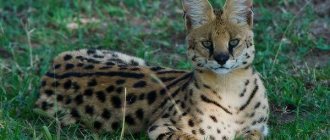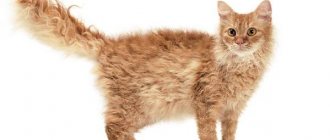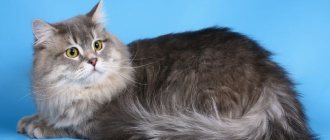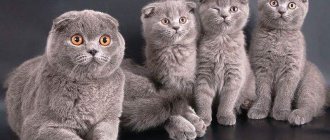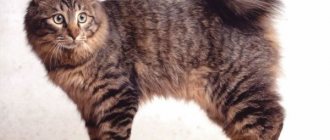Checkered fabric has not gone out of fashion for more than two centuries. Of all the variety of checkered materials, tartan fabric stands out especially, whose name directly indicates the country of its origin. The second, and more accurate name for this material - tartan - immediately sends us back to the era of historical novels and films, when a cell of a certain type and color was a kind of passport for every resident of Scotland.
History and varieties
More than 2 thousand years ago, the inhabitants of Scotland came up with a way to make practical and warm material for clothing from dyed threads. Craftsmen from each region came up with their own special patterns and thread colors for the fabric. Therefore, the colors and patterns of tartan fabric served as a kind of passport for its owner. They were used to determine the place of birth, membership in a specific clan, and social status of a person.
General view of the fabric
The more complex the pattern and the more shades in the tartan, the higher the kilt owner was in position. For example, ordinary people wore skirts made of plain fabric, dark checkered patterns were used for hunting suits, royal tartan contained 7 bright colors from natural dyes.
Since the mid-18th century, after the Jacobite uprising, tartan was banned. Only in 1822, when the British King George IV wore a checkered kilt to meet his subjects, did national clothing return to the country. Since that time, the cell began to conquer the world and gained popularity. Thanks to the use of synthetic dyes, new color combinations of patterns are constantly being created.
All checkered designs are registered in special tartan registers:
- Scottish Tartans World Register is a closed list. It contains 3.5 thousand unique tartan designs that have long belonged to royal dynasties, families, cities, and educational institutions.
- Scottish Register of Tartans contains 7 thousand patterns. Anyone can come up with and register a new checkered pattern in it.
The most popular types of plaid are:
- the Caledonia tartan, which has a recognizable blue-black-green check on a red background;
You may be interested in: Types and names of mesh fabrics
Caledonia pattern
- stripes of blue, green, gray muted colors on a black background distinguish the Black Watch fabric, which was allowed to be worn by royal troops during the ban on tartan;
Material "Black Watch"
- The Nova tartan with black, white and red stripes on a light brown background is the identifying mark of the Burberry brand;
Fabric "Nova"
- “Glenchik” consists of black and white graphic patterns that form a cellular appearance;
Glenchik material
- the “Houndstooth” pattern with the corners of the cells elongated diagonally is considered a classic for creating a respectable image;
Tartan "Houndstooth"
- A special feature of the Vichy cell is its bright small cells.
Vichy pattern
Please note! Tartan today refers to any checkered fabric, including that obtained by covering non-woven material or knitwear with a pattern.
Why scientists argue about the origins of tartan
Scientists are still arguing about the origin of the term “tartan”. Another difficulty lies in the fact that the first time tartan appeared was not in Scotland. Archaeologists have found fabrics with a diagonal checkered pattern in both Central Europe and Scandinavia, and these finds date back to the 8th–6th centuries BC. e. Therefore, it is most likely that the word "tartan" comes from the Old French tertaine (coarse wool blend).
Nevertheless, the heyday of tartan in the form in which we know it began in Scotland, in the 16th century. And in the 18th century, with the light hand of Queen Victoria, tartan became widespread in Great Britain and throughout the world.
Today there are about six thousand registered patterns. There are clan, corporate, local, personal and even holiday tartans. Traditionally, the wearing of each of them is regulated. Of course, if you wear a Stirlingshire pattern and go to, say, Sutherland, you won't be punished. However, fashion houses that want to release their collections with tartan usually develop their own version of tartan.
Photo: unsplash.com
Thus, Burberry designers were among the first to develop their version of “tartan” with a predominance of beige tones in the 20s of the last century. Like many geometric prints, tartan remains relevant today. But fashion designers love this pattern not only for its “eternal youth”. Depending on the size of the cage, a “tartan” can either make you look slim or plump. Therefore, such clothes are often produced in two versions: with a large pattern (for slim people) and a small one (for plus size people).
Clothing with a tartan print is usually considered casual or smart casual. In business-style clothing, an accessory (for example, a tie or neckerchief) with such a print is allowed, but it should not stand out from the main color scheme. At protocol events, “tartan” is clearly prohibited (unless, of course, you are a Scottish nobleman in a kilt with a clan pattern).
Photo: freepik.com
Tartan looks especially advantageous on children and teenagers. Some schools even design and register their own tartan pattern for use as an official uniform. But even if the school does not have a uniform dress code, casual checkered clothes look businesslike, but not dull. This is especially true for patterns with a predominance of bright colors (red, orange, blue). And this season, a slightly gloomy, but very effective black and red plaid pattern is fashionable.
Characteristics
Let's figure out what tartan is from the point of view of its manufacture.
Despite the variety of types, any tartan is a fabric with a diagonal line, relative to which the colors are located symmetrically. The creation of a tartan is based on a set of dyed threads arranged in a certain order. To create a diagonal, the threads are intertwined first in a forward and then in a reverse sequence. The twill type of weave gives Scottish tartan strength and density. Clothes made from it do not wrinkle and last a long time.
Important! Classic tartan is made of wool. Therefore, it is soft, warm, and absorbs water well.
Wool tartan
During mass production, cotton, silk, synthetic or mixed fibers are added to tartan fabric to change its texture and characteristics. For example, adding cotton increases wash shrinkage and creasing. Artificial fibers provide increased wear resistance, but reduce hygroscopic properties.
What is a tartan?
Classic tartan is a wool fabric with a checkered pattern. To create it, a so-called set is formed on a loom, that is, a set of dyed threads. The threads are arranged in a strict order, and are intertwined in direct and then reverse sequence. As a result, the main feature is formed that distinguishes tartan from other tartan materials - a check with diagonal symmetry, thanks to which tartans look very good when cut on the bias .
Special mention should be made of the varieties of traditional patterns that are usually registered in the World Register of Scottish Tartans (it has 3,300 patterns and is closed for replenishment) or in the Scottish Register of Tartans, where more than 6,000 varieties of plaid are registered. In addition to pattern, tartan is also classified by density, which is measured in ounces per square yard and ranges from 8 to 16.
As for mass production, the “tartan” category also includes fabrics made from cotton, artificial and mixed fibers. They are often made using a plain weave method, onto which a characteristic print is applied. A variety of checks are often applied to knitwear, nonwovens and other materials.
Scottish check in clothes
Checked fabric has long ceased to be associated only with the national Welsh style. Tartan models have no age, gender or stylistic restrictions. Almost all items of men's, women's and children's wardrobe are sewn from tartan.
Checkered tie
Checked clothes are combined with plain fabrics, leather goods, and jeans. A win-win option to look elegant is to match it with accessories, shoes, and bags in black colors.
You might be interested in this Features of polycotton: material components and characteristics
Care
Since classic checkered fabric contains wool, this affects the care of clothing. In order for it to serve for many years, it is worth following a number of rules. So suits, jackets, and outerwear are dry cleaned. In other cases:
- Can be washed by gentle hand or in a machine on the “Wool” mode;
- water temperature not higher than 30°C;
- prolonged soaking is prohibited;
- only gentle spinning, automatic spinning is unacceptable;
- dry things by laying them out on a horizontal surface away from heat sources;
- Ironing is possible only from the wrong side through a slightly damp iron. Iron mode "Wool".
You can remove simple stains yourself: just clean the item with a dry brush with soft bristles. The easiest way to remove pellets is with a special machine. If you don't have one, an old toothbrush will do. It is processed by fabric along the fibers. Read more about how to remove pills from clothes without a machine.
Before storage, items are treated with anti-moth products and then packed in special cases. Coats, suits or jackets are stored hanging on a hanger.
Dear readers of the Tkan.Club website, if you still have questions on this topic, we will be happy to answer them. Leave your reviews, comments, share stories if you have dealt with this material! Your life experience may be useful to other readers.
Tartan skirt: what to wear with it
There is a checkered skirt in every woman's wardrobe. It comes in two main types:
- With pleats around the waist or cut with pleats from the hip line. Suitable for young girls and women with an ideal figure.
Pleated skirts
- Cut on the bias. Thanks to the diagonal weave of the threads, this cut ensures a perfect fit on any figure.
Bias-cut skirt
Manufacturers produce plaid skirts of different lengths: from mini to maxi. Short skirts are suitable for students, medium length - for almost all women, regardless of age and status. Long ones are suitable for offices and walks.
Important! Tartan skirts dominate any ensemble, so the rest of the items are chosen very carefully.
Such skirts are worn with blouses, turtlenecks, T-shirts, hand-knitted sweaters, and denim jackets. The main condition is that the top of the silhouette be monochromatic.
In cold weather, thick dark tights are worn under the skirt, and a short jacket or jacket is worn on top of a single-color blouse.
Complete the look with Jane style shoes, elegant lace-up ankle boots or boots.
Plaid dresses - both for the feast and for the world
Check is deservedly one of the popular prints. A woman will attract attention in any setting if she wears a plaid dress. The main thing is that the cage pattern is appropriate to the situation and skillfully complemented with accessories.
Elegant look with a plaid dress
Tartan fabric looks organic in the following styles:
- in the form of a sundress;
- case;
- loose shirt;
- strict direct;
- widened towards the bottom.
Maxi models visually slim the figure. They are sewn with a collar and long sleeves. An evening option is a dress with a diagonal checkered pattern, with or without short sleeves. Shoes, handbag, belt, jewelry for the outfit are selected in one color, matching the color of the pattern.
For medium-length models, straight or A-line styles with a thin strap are suitable. Midi length is also suitable for wool sundresses and shirt dresses.
Summer sundresses with straps, styles with a cut-off waist, and sleeveless are sewn with a miniskirt, often full.
Note! The turn-down collar emphasizes the elegance of the outfit. Made from material in a contrasting checkered color, it becomes a stand-alone highlight.
Turn-down collar
The dress's companion items should be plain, for example:
- wool short coat;
- cardigan with tight knit;
- poncho in a contrasting color to the plaid;
- leather or denim jacket;
- light raincoat;
- stylish fur cape.
You may be interested in 65% polyester, 35% cotton: what kind of fabric, properties
Shoes include ballet flats, ankle boots, and suede boots. It is appropriate to wear over the knee boots with the mini version.
Tartan in the form of fabric for a school uniform
Increasingly, checkered fabrics are being chosen for sewing school uniforms. This form has a strict, classic look and at the same time does not look boring. Schoolgirls wear plaid skirts, dresses, sundresses, and jackets. Boys wear jackets, caps, ties, and checkered bowties.
School check uniform
The choice of tartan for schoolchildren is related to the properties of this fabric:
- practicality, because it is uncritical to put a dirty spot on a multi-colored fabric;
- durability and wear resistance;
- combination with plain things.
What to sew from checkered fabric
Having seen tartan in a store or at an exhibition site, many succumb to its charm and buy a piece. There are many options for updating your wardrobe by creating clothes from plaid fabric, including:
- you can sew another skirt, for example in the “Boho” style;
- Classic-style plaid trousers in calm colors will look elegant;
- a neckerchief or scarf will become a harmonious accent in any suit, even a man’s;
- an office suit and sundress will never be superfluous;
- It’s easy to make a vest for a man;
- The same models for mother and daughter look stylish.
Family in similar models
Important! There is no need to wear more than 2 items with a check and combine tartans with different patterns. Such clothes look tasteless.
People who want to keep up with fashion choose things with checkered patterns. And this is no coincidence, because tartan is a thorough and noble fabric that is timeless.
Checkered fashion
It can be argued that tartan has become a fashion classic. This fabric is great for coats, suits, dresses in the style of:
- casual;
- urban;
- preppy;
- office;
- vintage, etc.
From time to time, traditional plaid becomes a symbol of informal trends - punks loved to wear such trousers, and short plaid skirts became iconic among young Japanese women. But still, such material is associated, first of all, with elegance, restraint, and respectability. Among the most current patterns is a cage of this type:
- Burberry, which combines sand, white, black and red tones;
- Glencheck - a black and white or black and gray graphic pattern of small curls forming squares and rectangles
- Blackwatch - a muted combination of black, blue and green shades;
- Royal Stewart is a popular red checkered pattern.



